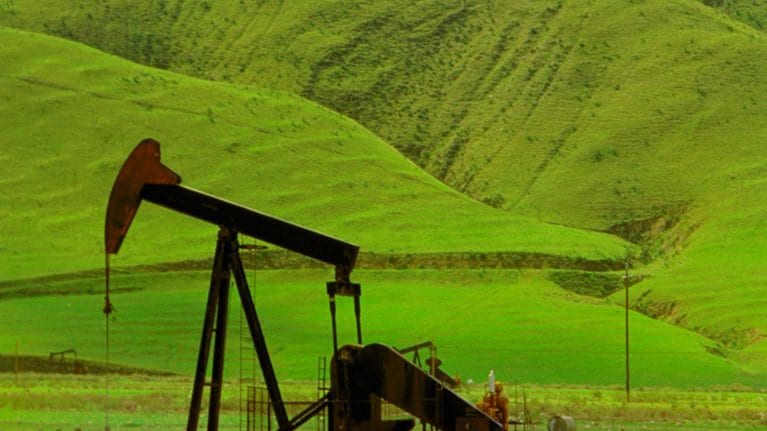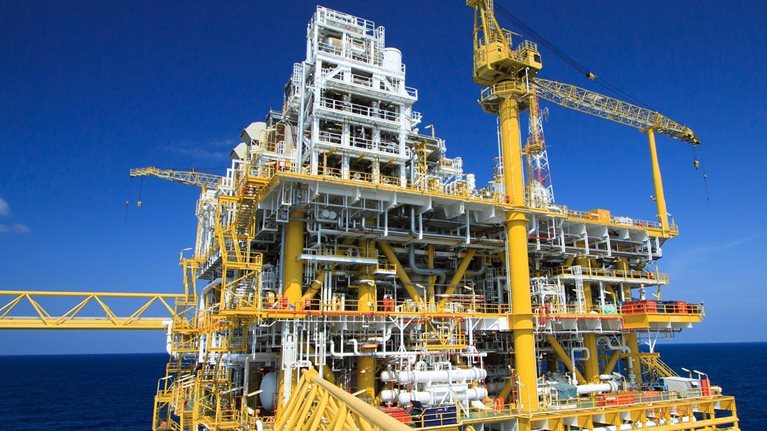There is a significant opportunity in subsurface optimization. Our estimates show that an analytical approach to production could improve the global average underground recovery factor by up to 10 percent, equivalent to unlocking an additional 1 trillion barrel of oil equivalents (boe). Working with oil and gas producers, we have seen an international oil company (IOC) in Africa increase production within two years by over 50 percent through optimization, a global independent increase production in late life mature assets by over 20 percent, and midsize I-NOC in Eastern Europe increase production in its gas fields by 7-10 percent, with over 15 percent in its waterflooded oil fields.
Stay current on your favorite topics
This global opportunity presents an invitation to C-suites across the industry. Companies that systematically pursue productivity improvements in their reservoirs—in existing wells, new wells, and throughout their operations—can achieve meaningful gains.
Why do many companies fail to take advantage of opportunities to boost productivity? They rely on existing practices to plan future operations, overlooking other options to increase yields. They commonly tend to plan based on results achieved last year rather than based on evaluation of full asset potential (or “technical limits that might be achieved”). For instance, it is common for productivity campaigns to conduct a constant number of well interventions a year. The problem with this approach is that rules of thumb can be arbitrary. Twenty well interventions per year may be right for a given reservoir, but it could also be too few (or too many) depending on the operation and specific reservoir conditions. Failing to consider a wider spectrum of options, or to analyze new data to determine if more interventions, or to target interventions differently, often leaves opportunities on the table.
We’re not suggesting to implement new technical levers to increase production. Our experience with reservoir-production improvement shows that significant gains can be achieved through systematic improvements in operating practices and implementation of lean operation principles. For instance, we identified several opportunities:
- Wells are structurally reviewed once per quarter per year, rather than once per week per month
- Targeting typically less than 10 percent of well stock for a production-enhancing intervention, rather than good practices of 20 percent
- Assessing waterflooding efficiency as an averaged ratio of total injected to produced volumes, rather than detailed consideration of waterflooding efficiency for reservoir injection cells
- Persistent silos of activities between operations, petroleum engineering, and well services; cross-functional well and reservoir management processes may look attractive on paper, but in practice they are rarely optimized
A systematic approach to improving reservoir production
A systematic approach to improving the productivity of a reservoir includes a comprehensive look at conditions across a basin as well as the total performance of oil and gas production operations, including existing wells, potential wells, and supporting systems.
The first step is to identify the gap between current production levels and what is achievable. Knowing what is technically feasible enables you to formulate a program and uncover measures that could close the gap. A thorough analysis of reservoir potential typically includes:
- Examining subsurface geology and production history, to establish the reservoir production potential versus performance to date.
- Identifying technical constraints on production for the end-to-end production system, and on existing wells, such as the infrastructure supporting well operations.
- Pinpointing ways to close the gap between production levels and the reservoir potential by locating bottlenecks in production, analyzing ways to increase productivity from existing wells, and projecting potential gains from drilling additional wells. Also, it is important to conduct analysis of the infrastructure to determine its performance potential.
- Determining which performance improvement levers to pull. We have observed four consistent levers for maximizing performance (reservoir potential or oil sweep efficiency, value from existing wells, value from new wells, and production networks) as well as three enablers that cut across functions: integrated planning and delivery, performance management, and digital technologies (Exhibit 1).

An example from a company in Eastern Europe illustrates such a systematic approach. It analyzed the potential of the reservoir based on recovery factors for similar reservoirs and our understanding of the remaining reserves at its oil field. (The company had estimates about the reservoir potential but was not using them to manage the performance of the field.)
Comparing this recovery rate to existing production levels indicates how the reservoir is performing. While it is possible for production to match potential recovery rates, we typically see production levels that are lower. That was the case for this reservoir too.
Would you like to learn more about Petroleum Asset eXcellence (PAX)?
Understanding the gap promoted better discussions about how to bridge it and which levers to prioritize to maximize production. These led the company to implement a series of initiatives to enhance well performance in three waves:
- In the short term, optimize existing wells.
- In the medium term, increased production of existing wells through acidization and artificial lift.
- In the longer term, enhanced well performance through waterflooding and polymer injection.
Which levers to pull
This approach was appropriate for this company’s reservoir geology and operational needs. Other companies in other circumstances may choose other levers to pull. To identify the right ones, it is important to determine:
- The potential for each well in the field. This is a straightforward calculation (a function of the pressures downhole, on the surface, and on the line).
- The potential of the total of all the existing wells. Look at the potential volume produced by each well; evaluate if the sum of wells in production can reach the potential reservoir-production level. Such an evaluation might show that the volume produced by existing wells is enough to meet production goals. Conversely, it may not (for instance, if some of the wells are producing 50 percent water).
Through this well-by-well review, managers can discuss actions to raise production and initiatives required to bring the reservoir’s output toward technical potential. These could include increasing production from existing wells, or intervening to produce more oil and less water. It could mean relaunching idle wells or drilling additional ones. Other steps could include evaluating the surface infrastructure for improvements, and ensuring that metering is providing adequate surveillance data for decision making.
Each of the four key operational levers—reservoir potential, value from existing wells, value from new wells, production networks and infrastructure—are among initiatives oil and gas companies pursue today (Exhibit 2). However, the key to optimizing reservoir production is to deploy these levers systematically, rather than, for instance, following the same plan as the previous year.

Elevating production at Kazakhstan oil and gas fields
Our experience with a company in Kazakhstan is another illustration of the benefits of taking an analytical approach to maximizing reservoir production. After examining its performance, the company decided to pursue three initiatives covering two levers: maximizing value from existing wells (through a well-intervention program and via jack-rod pumping optimization) and maximizing reservoir potential (through a waterflood optimization).
Well intervention: Analysis leads to priority targets
For the well-intervention program, the company used historical intervention data to create a selection process for wells, and criteria for acidization and shutoff. It defined the process for analyzing well performance, prioritizing wells for interventions, and the sequence for doing so. The result: 5 percent improvement in performance.
Reservoir waterflooding: Modeling and optimization improves results
The company had good information about the reservoir and its composition. By building an optimization model, the reservoir engineers could determine how much water to inject into which reservoir blocks to achieve the best production increases. Waterflooding optimization in this case improves production by 15 to 20 percent.

Preserving the downturn’s upside
Pump optimization: Testing and optimizing the pump regime
The company’s objective for the pump intervention was to optimize downhole pressure, getting the right trade-off between low pressure and water breakthrough in the well. An examination of existing processes to determine downhole pressure was found to be inconsistent. After developing a formula for optimum downhole pressure, it was tested and refined before being applied across the reservoir. The result: a 5 percent productivity improvement.
Analysis of conditions sets the stage for consistent execution
The Kazakhstan example shows how a strong methodology can maximize improvement. Any producer can make profitable interventions wells or a reservoir, but getting the best return requires analysis followed by systematic execution. That means establishing a standard operating procedure for analysis, and a decision tree for prioritizing and sequencing actions.
This stepwise process invariably uncovers new production improvement opportunities. We have found that companies pursuing this approach realize gains from maximizing reservoir potential (2 to 5 percent), maximizing value from existing wells (10 to 15 percent), maximizing value from new wells (15 percent) and optimizing network production (5 to 10 percent). Overall, this has led to companies achieving a bottom-line production improvement of between 15 and 30 percent (Exhibit 3).

Barriers to optimization
However, an analytical approach to maximizing reservoir potential can face organizational and economic challenges.
As noted, many reservoir managers tend to rely on the previous years’ activities and numbers to guide their plans. Breaking through this inertia requires a commitment to take a fresh look at the reservoir and create a new “zero-based plan” —one that does not start with past performance and activities.
Economic hurdles—the global energy market, the cost of interventions—may get in the way. Even if a reservoir has potential for improved production, it may not be economical to realize. But knowing what the potential is, and how it might be achieved, a company can discuss what might be done now, and what in the future. A rise in oil prices could make new wells economically viable, and new technology might bring down the cost of improvements. A company with these opportunities already identified can take advantage of them when circumstances change.
Your first steps to optimization
Adopting an analytical approach to maximizing reservoir productivity requires a company’s leaders to commit to change and mobilize the organization, not just those in the C-suite but also managers in the field. Many people must buy into a reassessment of existing practices, and help rethink the best way to achieve the organization’s goals, which is part of a broader shift from volume to value in the oil and gas industry. This is not an easy task: 70 percent of change efforts fail and there are several things an organization must do to successfully transition to a new way of working. These include defining the current and future states of the culture and identifying three to five cultural change priorities as well as root cause issues and “blockers.” Also, an organization will have to take steps to establish formal reinforcement mechanisms, cultivate change-management skills, and train change leaders.
With the organization mobilized, a central team can help structure and standardize how to identify the levers to maximize production, create initiatives to achieve new goals, support implementation, and track progress.
A fresh approach to improving productivity can involve much change. But as we have seen, it can pay off handsomely.


